|
5th July 2022 It's a Tuesday and we're at The Sovereigns with the Woking Board Gaming Club for an evening of gaming. The world of Victorian anthropomorphic railroad magnates is a cutthroat one in this game of acquiring train lines and towns. Buy low and sell high to become the... Raccoon Tycoon! What's in a game?
Raccoon Tycoon has excellent production values. Wooden tokens are used for commodities and first player token which is a good move, they always have a quality to them and also look cool. The cards (And paper money) have a sturdy feel to them while the tiles are satisfyingly thick. The game's art direction is also equally high. Anthropomorphic art is used throughout the game and I've found that it's a divisive style which most people do or don't like. Regardless of your view on this, it's undeniable that the quality of the art is high. The standouts are the railroad cards which use a oil painting style to display whimsical characterful animals in Victorian clothes. Curiously, the building tiles use a completely different style, instead displaying line illustrated buildings and subjects with mostly flat and barely shaded colours. It's a striking contrast that should theoretically be jarring but actually fits quite well. Icons used to represent commodities on cards are easily understood. Most other game information is relayed via text which is usually very clear. How's it play? Setup
On to play Players are trying to earn VPs in Raccoon Tycoon, this can be done by collecting sets of railroad cards, acquiring town cards to pair with railroad cards and gaining building tiles which are not only worth VPs but can provide avenues to scoring more VPs. All of this requires money and commodities, players will need to manipulate the commodities market to maximise the profit gained from selling their own commodities while trying limit the profit of other players. Racoon Tycoon follows a traditional turn order with the active player resolving their action before play moves on to the player on their left.
Endgame Play continues until one of the following 2 criteria is met.
VPs come from a variety of sources. Sets of railroad cards. Town cards paired with railroad cards. Building tiles earn 1 VP each. Bonuses from building cards may also provide additional VPS. Points are tallied, highest score wins. Overall
Even without the anthropomorphic artwork, Raccoon Tycoon would be something or a quirky game. It packs quite a lot of mechanical systems into a single game albeit to a fairly simple level. A little bit of stock market manipulation, a touch of set collecting, a dash of auctioning and a sprinkling of engine building. It could be a recipe for disaster but in the case of Raccoon Tycoon; the whole is greater than the sum of the parts. A large part of this I feel is due to the building tiles. Their unique bonuses both provide some asymmetrical gameplay elements and can also give players a bit of strategic direction. Raccoon Tycoon is a bit of a balancing act between acquiring cash for railroad cards/building tiles and commodities for town cards. It's hard to work towards both at the same time. Adaptation is important here, as is planning ahead. Players could look to finding ways to raise commodity values to increase profit when selling them later This brings me to commodity manipulation. There isn't too much interaction between players other than auctioning and commodity manipulation, Watching what opponents are doing can prove useful and is something of a higher level of play. I.e., if 2 players are accumulating the same commodity, there's a possibility that one of them will sell it, causing that market to crash. Beating a opponent to the punch so to speak, can cost them lots of cash! Raccoon Tycoon is fairly rules light and I think seasoned gamers won't have any problems grasping all the systems at work here. For less experienced gamers, the curve will be steeper, I don't feel it's a gamebreaker but I imagine it could be off putting. While there's enough gameplay to give players thoughtful and meaningful decisions to make and a fun experience, I also found the game to be a little unengaging and uncompelling, I never felt like I was building railroads or towns and despite the unique art style, it didn't feel like it stood out from the crowd. here's nothing wrong with Raccoon Tycoon but it wouldn't be my first pick for a game, although I'd have no problem playing it if someone else wanted to.
0 Comments
3rd February 2022 Thursday night gaming at Simon's came to a conclusion with the 2nd and final game of the evening; Nidavellir. Google tells me that Nidavellir might mean the wane of the moon and is derived from Norse cosmology. Protect the dwarf kingdom from the ravages of a dragon by taking on the role of a Elvaland councillor and collecting sets of cards... err... gathering the bravest army of dwarves possible by trawling pubs (I kid you not.). Where's Sneezy when you need him eh? More like boozy! What's in a game?
The cards holders and especially the royal treasure are a nice touch too. However, since they can only be easily viewed from one side, it sort of forces the game to have a strange setup where the card holders and treasure rack are along one edge of the playing area instead of in the centre with all the players along the other edges. Nidavellir also makes good use of artwork, most of which appears on the cards, they contain well detailed, good quality illustrations of different dwarfish characters painted in a sort of monochromatic watercolour style along with a dash of a single colour. Usually I'd find this kind of art a bit dull, but here it works and gives the game a distinctive look. Much of the iconography is clear but some of the hero cards have symbols which are quite small and may also need looking up occasionally. How's it play? Setup
On to play Nidavellir is an auctioning game that has players simultaneously perform series of 3 blind bids during each round. Once bids are revealed, actions are resolved in an order determined by the bids.
Endgame Play continues until the Age 2 cards are also depleted, then the game goes to scoring. Each of the 5 classes has it's own way to score VPs, suffice to say; the more cards a player has in a class, the more that set scores. Bonus VPs which can come from various sources should then also be added in. Points are tallied, highest score wins. Overall
Nidavellir does a good job of mixing set collecting with auctioning. The set collecting element is about a mixture of getting the cards you want and sometimes collecting a card just to deny it to another player. Sometimes you'll be completing to build sets and sometimes you'll want to take a card no one else does on the cheap. Pretty standard stuff for set collecting and what you'd expect. The auction mechanics offer something a little different. I have to say I'm not the biggest fan of auctioning games, I don't dislike them and I've enjoyed some of them but they're not really my jam. I've often found bidding decisions could be a little stress inducing, which is probably why some people love them so much! Nidavellir cleverly bypasses some of this with it's auction system because players never lose their bids. Instead of trying to out bid someone or bluff a bid up, players will be trying to gauge how others will bid. This requires not only watching what cards others have been collecting and trying to anticipate what they will prioritise in each bid but also paying attention to how they've been upgrading their coins. If another player has a coin that's got a higher value, it will never be possible to simply outbid them and it might not be even worth going against them and could be a good time to play that 0 coin and get an upgrade instead. There may also be other times when players want to bid low such as when all the cards in a tavern are not valuable or if they're not valuable to other players. This means that Nidavellir has 3 avenues of strategy that the player must take into account. Not only do players have to keep an eye on which dwarf cards to try and acquire, they'll want to think about creating rows as well as columns to earn hero cards which cna prove very useful. Players will also need use that 0 coin to upgrade coins - which is essentially a form of arms race that can't be ignored - unless a player thinks they can win by being last in every auction! Nidavellir is a solid game and I can't find anything to fault about it. It isn't particularly complicated but there's definitely enough depth here to keep players engaged and generally give them meaningful decisions to make. If you like auctioning or set collecting games, it's probably worth a look. If you like auctioning and set collecting games, Nidavellir is definitely worth a look. 31st August 2021 We're at The Sovereigns in Woking with the Woking Gaming Club for some Tuesday evening gaming. The first game of the night was Raids. Raids is a game about Vikings going around doing what they do, which is raiding and pillaging. What? You say, that's a cliché and Vikings were also explorers, traders, craftsmen and so on, well this game is called Raids, so raiding and pillaging it is; and all for glory! What's in a game?
Artwork on the game board is nice and colourful and the longship board are also good, the art on the voyage tiles is a little drab, a little more colour would make them pop but it's only a very minor quibble. There isn't too much iconography in the game and mostly it's very clear what it means. All-in-all, excellent, top notch production values for Raids. How's it play? Setup
Raids is played over 4 voyages which each involve journeying around the game board. During these voyages, the players will stop at the randomly placed voyage tiles and deal with those encounters.
Endgame Play continues until all players have completed the 4th voyage, then scores are calculated. Players can earn Glory points from a number of sources. Pennant tiles on a player's Longship earns straight up Glory points. Hammer tiles on a Longship earn points per Viking also on the Longship. Goods tiles that have been traded earn Glory Points. Sets of Rune tiles collected earn points accordingly. Monsters defeated earn points. Finally, cash accumulated during the game earn Glory points on a 1-to-1 basis. All points are tallied, Highest score wins. Overall
Travelling around the map, players will faced with a central choice on deciding how far to move their Longship? Should a player move slowly to encounter more tiles or rush ahead to a tile they really want? This is of course contextual and players will have to identify what they need and prioritise accordingly. They'll also have to keep an eye out for the behaviour of other players and want to gauge their motivations. The rule where players can only collect tiles at the start of their turn slots into this nicely, possibly allowing other players to fight for the tile and keeping the situation tense. A worker placement game that allows workers to drive off other workers! I also like how the Longship board works, merging aesthetics and mechanics. It's a great visual representation of what players are carrying and crew limitations. The game is in essence a mid-to-light worker placement game with a touch of auctioning and resource management mechanics. Raids fits its Viking theme reasonably well as players sail around, trading and plundering while battling mythic beasts and each other. Having said that, I found the game a little unengaging, maybe a little too abstract. I could sail pretty much anywhere I wanted with generally minimal risk, it never felt like epic adventuring. Combat was fairly rare, mostly players didn't complete too much for the same resources but it felt bland, a quick glance at other player's Viking meeples will tell you if you can be beat them or not and at what cost. I'm also a little uncertain of how much replayability Raids has. Even though it has random placement for the encounter tiles, because they're not really interdependent on each other, it felt like it didn't matter the order in which you might encounter them, especially since I could sail as far as I wanted. I don't think Raids is a bad game, if someone wanted to play it, I'd have no problem joining in (But not too often!), but it's not a game I'd pick. 20th July 2021 I'm in Woking at the Sovereigns with the Woking Gaming Club. The second and final game of the evening was For Sale; time for some property flipping and stressful auctioning action. What's in a game? For Sale is a card game and comes with 2 types of cards.
Artwork on the property cards is pretty good, colourfully depicting 30 different properties ranging from a lowly cardboard box for the 1 card to an orbiting space station for the 30 card. The currency cards all identically depict cheques of various values There's not much else to say here. How's it play? Setup
For Sale is played over 2 phases, in the 1st, players use their money to buy properties and in the 2nd, they use these to get currency cards, essentially flipping the properties for profit. Phase 1: Buying properties.
Phase 2: Flipping those properties.
Endgame Players tally the values of all the currency cards they acquired and any coins that were unspent from phase 1. Highest score wins. Overall
For Sale is a simple game to play, it features two types of auctioning that're easy to understand, however there are a couple of curveballs that that affect the game's dynamic. Firstly in phase 1; which is an open auction, there's the rule that states when a player passes, they only get half their bid back and the lowest valued card. It means the classic play of trying to run up someone else's bid is a risky proposition, you may well end up running yourself up for a very low value card as well. Even the act of initially bidding may cost a player more than they want to spend, it's something player's need to think about. All the property cards drawn have to be acquired by players and it may not seem like it, but sometimes a lower valued card can end up generating more profit. Why? Because the value of a card does not necessarily dictate its worth. This brings me to phase 2; the blind auction. This is where player's sell their properties to get profit, however the profits that players can potentially generate will contextually change from round to round and depends on the currency cards drawn. No matter how much you paid for a property card, when you use it, it will only generate income according to the currently drawn currency cards. This is where players have to start watching what other players will do and know when to push high or low valued property. If a $15,000 currency card had been drawn and you know another player has the 30 point property card, you know they're going to play it - it guarantees them the $15,000 card, so is it a good time for you to use a high value card? On the other hand, the 2nd highest might be worth it, or it might be not. Conversely; in some circumstances, the lowest value cards can have great worth, if all the currency cards drawn are high value, it can be a good time to play lower value cards, remember it's all about profit not value. A 30 point property card that costs $8,000 and nets a $15,000 currency card, generates a profit of $7,000. If 1 point property that cost 0 because somebody passed and took it for free is used to get a $8,000 property, then that's $8,000 profit! This example is extreme and doesn't realistically occur too often, but the principal is sound; if demand is high (Multiple high value currency cards are drawn.), then it's time to push your lowest value properties for maximum profit; capitalism at its finest! Conversely, if there are fewer high value currency cards out there, playing a high value property at the right time will outbid other players and score the maximum profit. All this makes For Sale a very situational, essentially contextually-driven game about managing the game's inherent unpredictability and adapting when it's called for. It becomes about not only knowing when to play which cards, but also watching what properties other players have and trying to predict their strategies, which can profoundly effect yours. I have love/hate relationship with auction games, the unpredictably always worries me and For Sale is more unpredictable than most in my opinion. Even so, it's an enjoyable game and definitely worth a try, if you're a fan of auction games, you should really try it. 21st December 2019 It's the last Saturday night before Christmas and we're at Matakishi's for some board games. This is a game about accumulating stocks in railway companies, running railway companies and paying out dividends. Yep, this is 'Irish Gauge' and not 1830. Irish Gauge is a game that simultaneously is the same as and also completely different to 1830. That is, it shares the same themes as 1830, but is a quite different game. What's in a game? Irish Gauge components.
How's it play? We begin with setup, which is pretty simple.
Initial auction Before normal play commences, there is a 'initial auction' This is where players get to bid on and auction one share from each of the 5 companies.
In their turn, the active player can perform 1 of 4 actions, these are: Place track, place a special interest, auction a share and call for a dividend. Place track: This is probably the most common action in the game
Endgame The game ends when there are no more cubes in the bag, either because of a dividend being called or placing a cube as a special interest on the board. All players tot up their cash plus the initial value of the shares they own. Highest cash wins. Overall
Irish Gauge is a railway building game with stocks and shares and companies. It's actually quite a common theme in board games. But Irish Gauge plays nothing like any of these other games. It seems like the basic strategy is that players need to build railways, to issue dividends, to buy shares. Simple, right? Not necessarily. Whilst players may want to maximise their railway network before calling dividends, to get as much money as possible to have more funds when bidding on shares during an auction. Waiting a long time to buy shares is a risky move. Why? There limited opportunities to call for dividends because when the game starts, there will only be 22 cubes in the bag and each dividend uses 3 cubes. So there's maximum of 8 times a dividend can be called - and the last dividend will be with 1 cube! This is of course, provided nobody uses cubes to upgrade towns. So shares bought later in the game will benefit less because there will be less dividend pay outs. This isn't so bad if you get a shares at the initial value, but that's unlikely to occur. So paying an extra 20 to get a share that only pays out 5 twice is actually a loss of 10! This means players will want to get shares as quick as possible, but at the same time, it's prudent to wait and see if other players have low funds as this is a great time to trigger an auction, since they may have to pass, giving the active player a share at the initial value. It's like some sort of horrible balancing act. There's more as well. If a player thinks they benefit from a dividend more than anyone else, then they might ignore buying shares or improving their network and may just call dividend after dividend and 'run out' the game. However there's a random element to dividends, so they may scupper themselves. After playing the game a couple of times: It seems to me that how a player places their railway lines is a bit of a 'no-brainer'. But on reflection I don't think this is as much of an issue as I first thought. Perhaps when to call for dividends may seem more vital for the game than anything else - provided the right cubes are pulled from the bag of course. There's a lot to think about here, which is good. Finally, Irish Gauge plays as fast as a roadrunner with it's backside on fire. If you're used to slow and meaty railway games, Irish Gauge may feel quite fresh with it's relatively short play time. I'm not certain if Irish Gauge will stand up to extended play. But it's worth giving it a couple of plays at least. 16th November 2019 Saturday night gaming at 'Matakishi's' continues. The second game of the evening was 'High Society'. Some people are just obsessed with reputation, luxury, wealth and prestige and will pay anything to elevate it. Well almost anything. These are the trials and tribulations 'endured' by the aspiring wealthy and privileged, where image is everything. What's in a game? High Society has broadly speaking 2 types of card.
How's it play? First give each player a 11 card bidding deck. Then shuffle the status cards to form a deck and determine a starting player.
Endgame 4 cards in the status are coloured green, they are the 3 prestige cards and one of the scandal cards. When the 4th green card is drawn, the game ends immediately - there is no bidding on the 4th green. Next is the game's sting in the tail. The player who has the least amount of money in their hand is eliminated from the endgame! The remaining players total the value of their luxury cards and modify them by any prestige/scandal cards they have. Highest score wins. Overall
There's a few clever little things to think about here. Because a player can only add to their bid, players will be faced with tricky choices. If you really want a card a card, do you bid low hoping other players won't try and out bid you? Or do you start with a high bid hoping to discourage others and use less cards. For example: Using a 4 and 6 is worse than using a 10, even though they have the same value, in the first case you're using up 2 cards instead of 1 - and you can't bid if you don't have cards. Also; there's nothing more infuriating then when you want to push up a bid by 1 or 2 and you've got nothing less than a 5 in your hand. The endgame mechanic adds an extra level of unpredictability to the game. A game can last anywhere from 3 to 15 rounds. Players will know when there's a chance that the game will end because they'll see that 3 green cards have been played, but they won't know exactly when the end is coming. All of this can affect how you bid. Finally, there's the player elimination in the endgame. The sting in the tail that constantly niggles and lingers in the back of every player's mind when they're playing. It doesn't matter how well a player has done in the bidding if they're eliminated for having the least money. It is painful. All in all, High Society is a quick to learn game that is quite fast to play and makes an excellent filler game. It's mechanics push players into making meaningful and tricky decisions. Other than constant stress, what's not to like? 5th October 2019 Gaming night at Matakishi's is underway. The third game of the night was 'Campy Creatures'. Put yourselves in the shoes of a 'mad scientist'. Misunderstood, never trusted and unloved. But there's a reason why the mad scientist is the way they are and why they kidnap innocent people. It's to stop those other pesky mad scientist from doing it first!! Campy Creatures is a blind bidding game where you bid to capture teenagers and other hapless victims and put them into sets in order to score points. What's in a game? All of the cards in this game are nicely illustrated with art that wouldn't look out of place on posters for the 'creature feature' movies that this game is emulating.
How's it play? As always we begin with set up.
Campy Creatures uses blind bidding. The highest bid gets to go first and pick the victim card of their choice.
Endgame Campy Creatures is played over a total of 3 rounds. After the final round, final scores are tallied, highest score wins. Overall
Campy Creatures is a quick and interesting game to play. This is down to the special abilities on the monster cards. They can really throw a spanner into the works (And player's plans.). Special abilities include cancelling other cards special abilities, acquiring 2 cards instead of 1, forcing someone to discard a card they captured etc. Learning to watch other players is important. Looking at what cards they have collected gives you the chance to anticipate what other cards they will want. This means you have the opportunity to mess with them! It gives the game an extra level of depth, which without the game would be too simple. Even so, with so few special abilities (That are identical for all players.), after prolonged play, the game could become 'samey'. But as a occasional filler game, Campy Creatures is a good game. 11th June 2019. Gaming Tuesday continues at 'The Sovereign' Next up is 'Hit Z Road'. Have you ever thought about what you would do during a zombie apocalypse? If your first thought was. "Well, I'd design a game about being in a zombie apocalypse!". Then this might be the game for you. Hit Z Road is designed to look like a game made by a child during an apocalypse, made from bits and pieces of other games etc. Some of these are other actual real games. So Hit Z Road is a game set inside the game you are playing. Omg! There goes the 4th wall! In Hit Z Road you play a small band of survivors travelling through a zombie infested apocalyptic landscape towards a safe haven. What's in a game? In particular the art direction of this game is superb. Many of the components are designed to look like they came from other games (some real games and some fake). The rulebook looks handwritten. There also human and zombie meeples. There are 3 different types of currency/resource in the game, (Ammo, petrol and adrenaline. These will be explained below.). The game plays homage to Fallout by using bottle caps as the different currencies and they look cool. You can't fault the production values here. How's it play? Hit Z Road is a relatively simple game. Your band of survivors travel from left to right dealing with the obstacles encountered. There are basically 3 phases in a round. Routes
Auctioning
Travel
And that's pretty much it for the rules. The game continues until all the encounters have been played and dealt with. Upon which any remaining survivors reach their destination and points are Points are earned in a few ways.
The player with the most points wins. Overall Hit Z Road is a fairly simply game (Which is not necessarily a bad thing.) that will give players a couple of meaningful choices to make every turn - which is a good thing. A bad choice of route can cost a lot of resources. But the game's problem is the auctioning mechanic, to reiterate: During the auctioning phase, players bid to create a turn order in which to choose which route to take. Everybody who make a bid, must pay for the bid they made. Thus it's not a good idea to to try and 'run up' another player's bid, (because your own bid and cost would almost be as high.). The problem here is 2-fold. Firstly, the player with the most resources can always go first. This means that they can always have the choice of the most optimal route which will gain them the the most (Or lose them the least.) resources. The remaining players will be bidding (And spending resources.) over the remaining sub-optimal routes which are less beneficial. Essentially, they'll end bidding over the scraps. Secondly, when most of the players have either spend too many resources or realised they can't bid against the player with the most resources. Then they'll stop bidding. And when no one bids, the turn order does not change. This means that the dominant player doesn't even need to spend any resources to stay first or continue dominating. The results of this is that all the players bar one will be put on to the back foot and will find it very hard to get off it. This ruins the game. I know why it was done - they didn't want auctioning reduced to 'Auction winner goes first, play proceeds to the left'. But still, it ruins the game. I've looked online and found I'm not the only person who thinks so. I've seen that this is called a 'Runaway Leader' problem. This is the harshest I've been about a game in this blog. I've played games I didn't like or care for. But I consider this to be a bad game, no two ways about it. In the end I look at the game's excellent production values and can't help but think. 'Maybe the designers got their priorities mixed up.'. 5th February.
2nd game of the night at 'The Sovereigns'. Loot is a little card game by Reiner Knizia about chasing wealthy merchant ships with your pirate boats. Perhaps this game should be combined with Century Spice Road which we had just finished playing! Loot is a fairly simple looking game with some hidden depth. Loot has different 4 types of card.
Everyone starts with a hand of 6 cards. During your turn you check for winning battles, (more on this below). Then you draw a card or play a card. What cards you can play depend on what's already been played.
Right at the start of your turn, you check for winning battles. This involves looking at all the merchant ships in play, if your pirate attack against a merchant is stronger than any other pirate's (or is uncontested), then you claim the merchant ship - all other cards are discarded. If the attack strength of 2 or more players is identical, then there's a stalemate and the merchant has not been captured by anyone. Pirate captains and the Admiral act as a trump cards and win a battle, regardless of the attacks strength of other players. Play continues until the deck is depleted. The player that captured merchant ships with the highest combined value of gold wins (any merchant ships in your hand at the end of the game are deducted from your final score). And that's pretty much it. Good, clean, wholesome, pirating fun. A great little filler game, quick to play and easy to learn. With enough strategy to keep it interesting. |
AuthorI play, I paint. Archives
March 2024
Categories
All
|













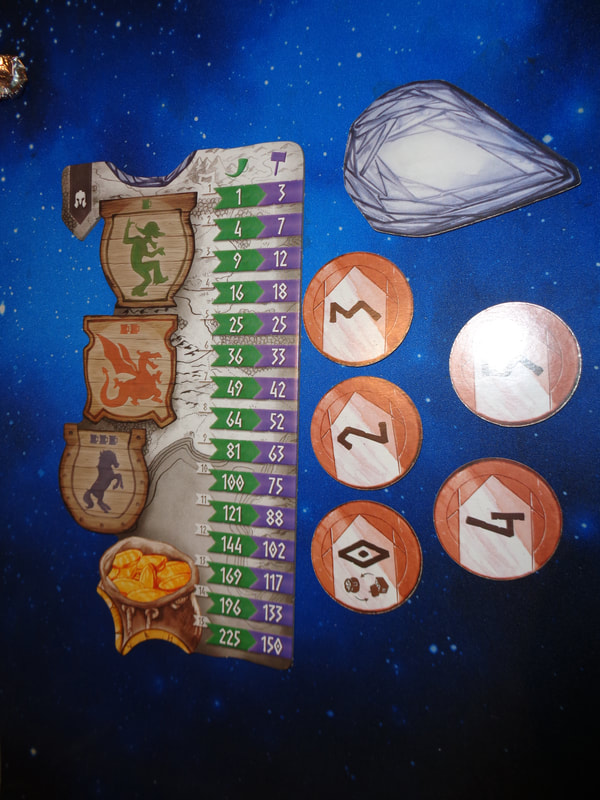
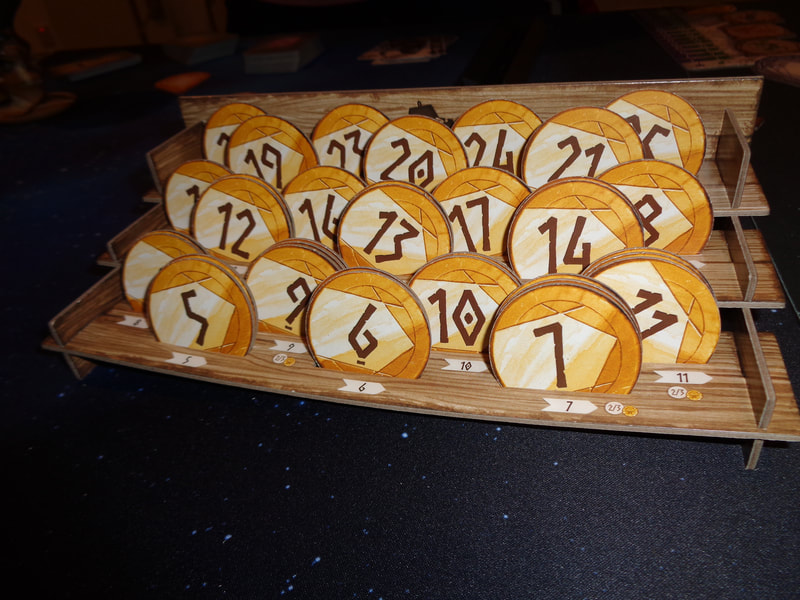
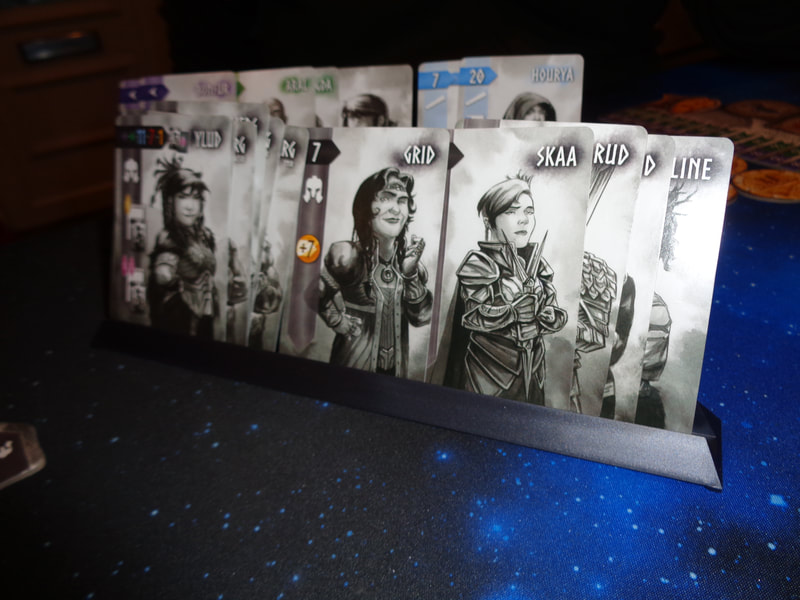
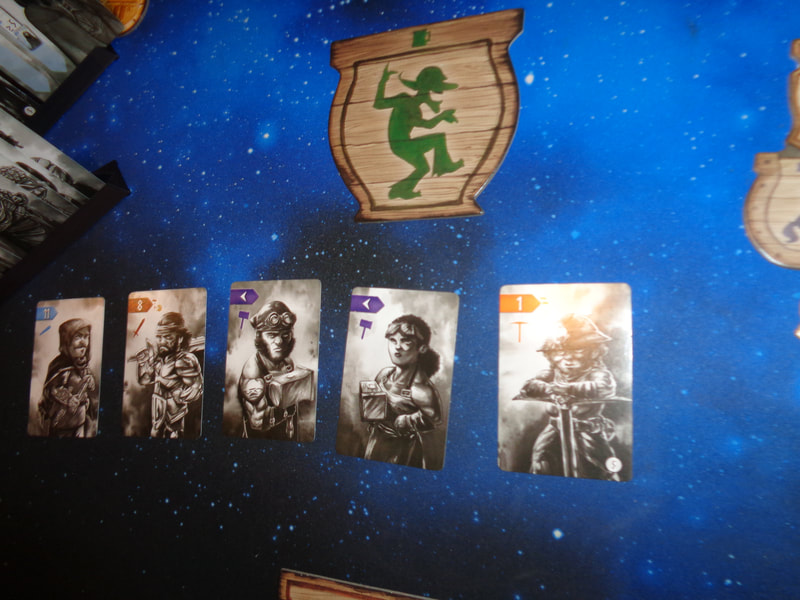
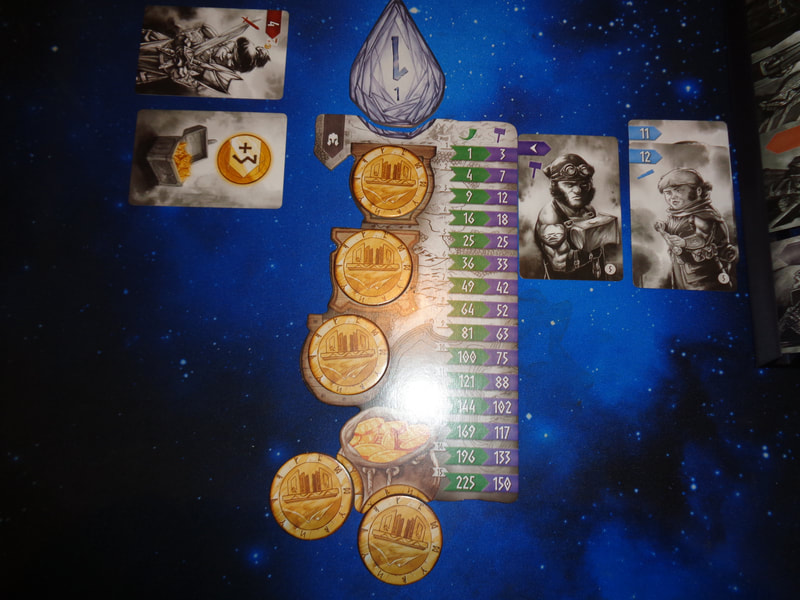
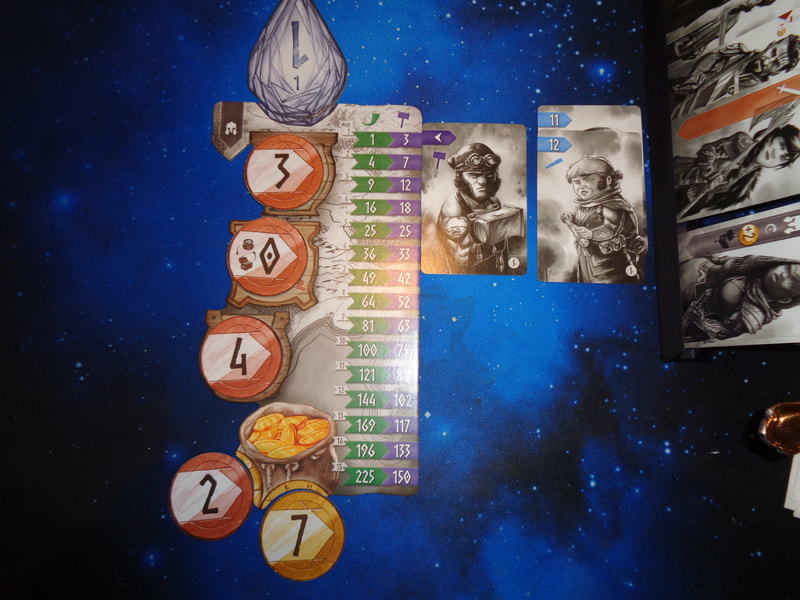
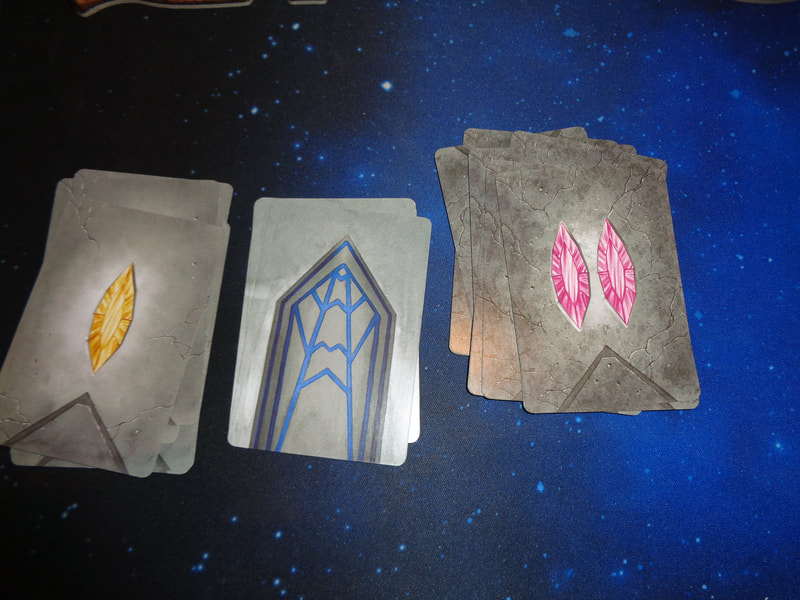
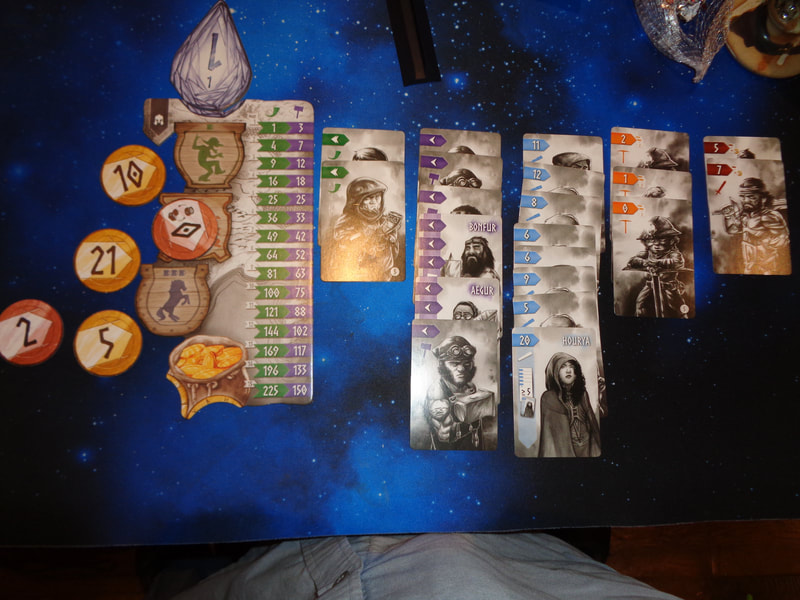
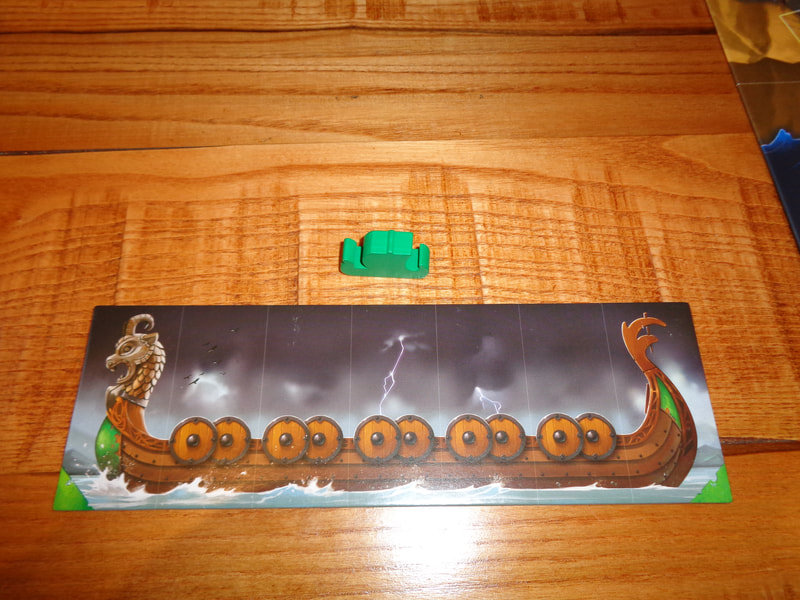
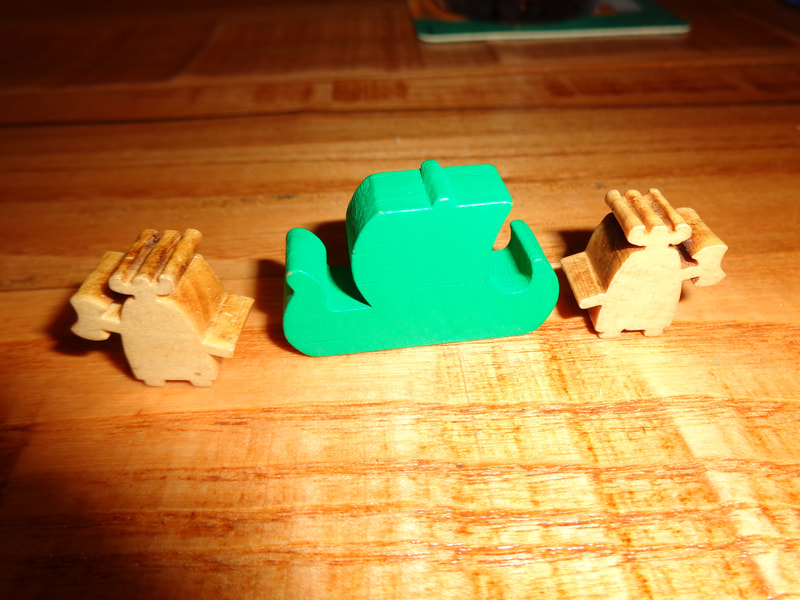
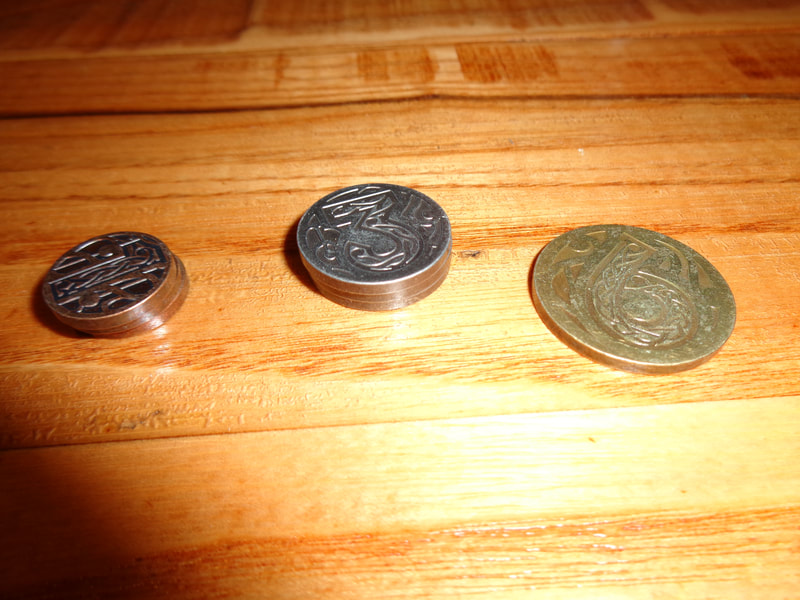
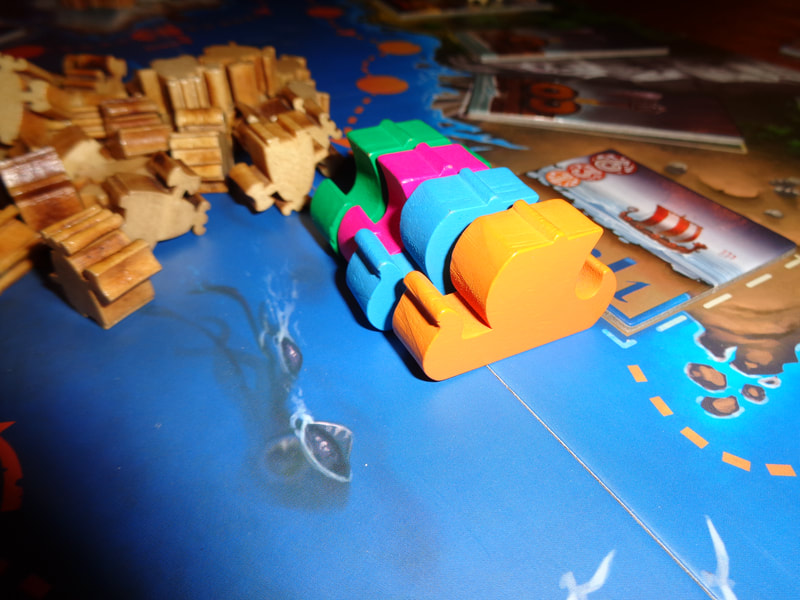
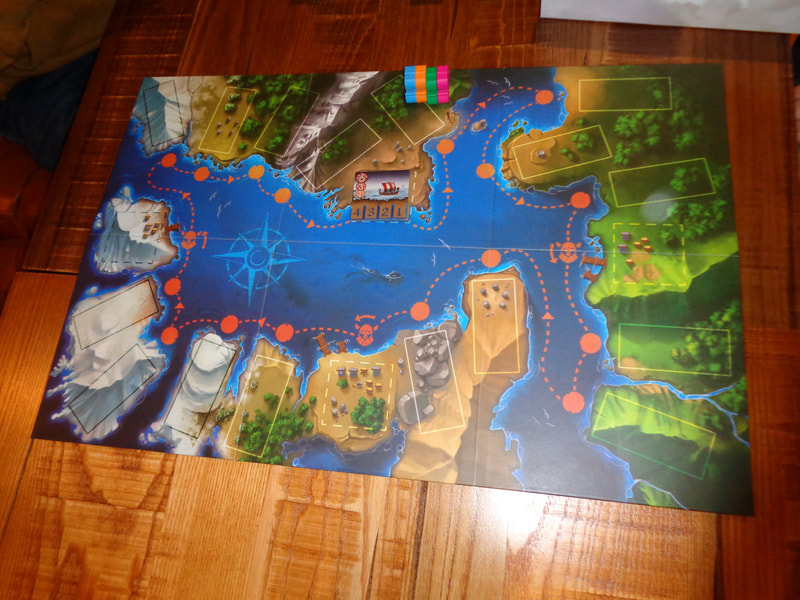
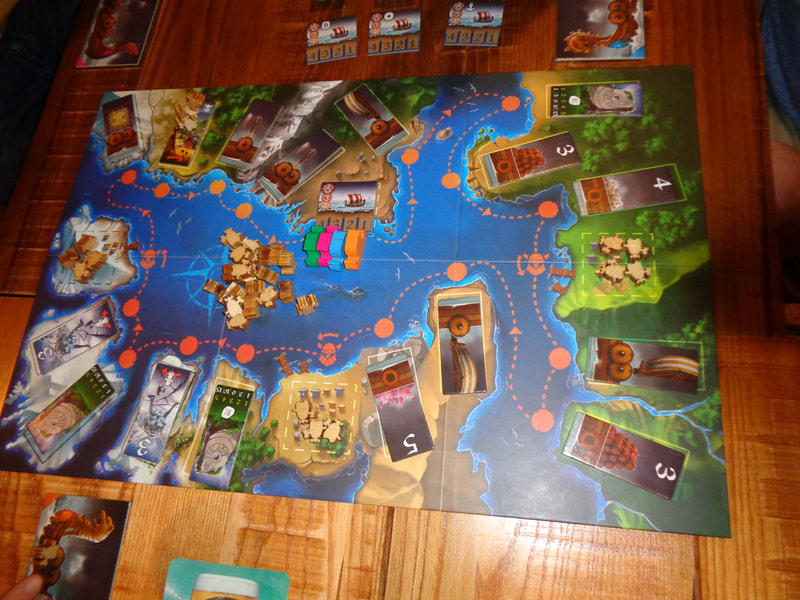
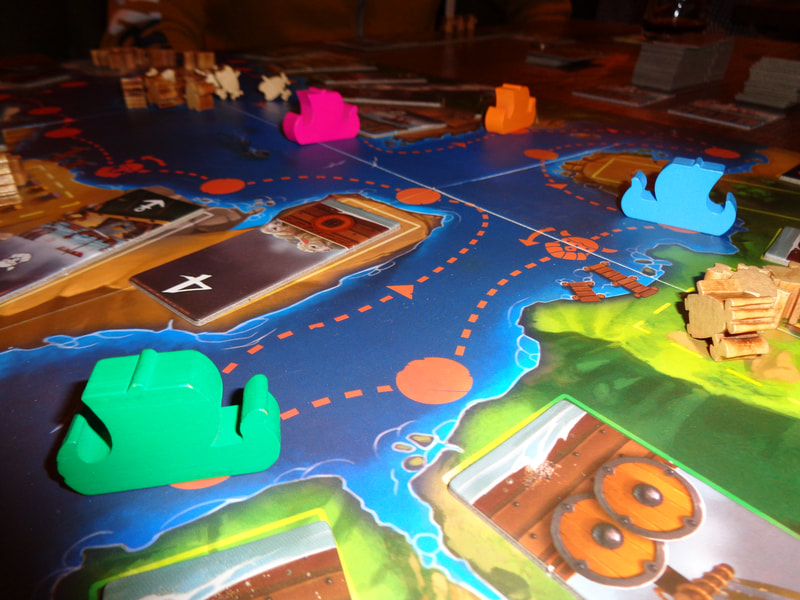
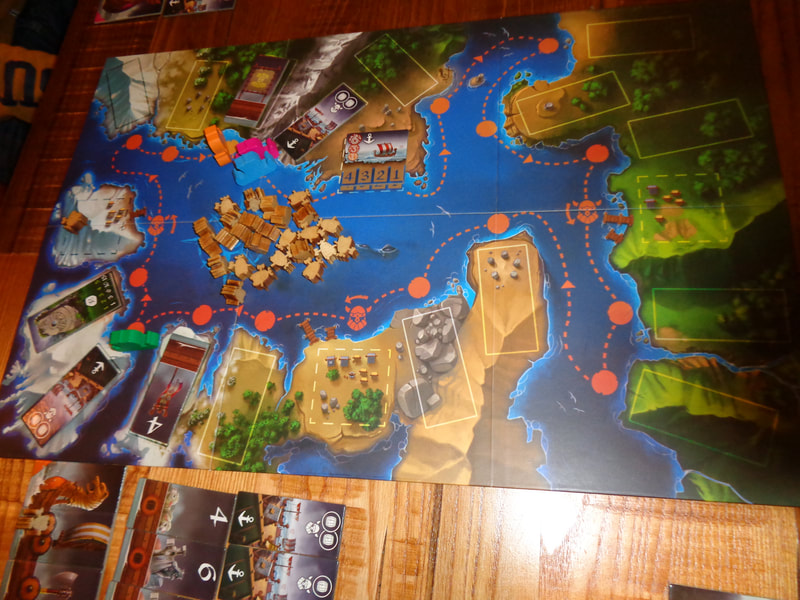
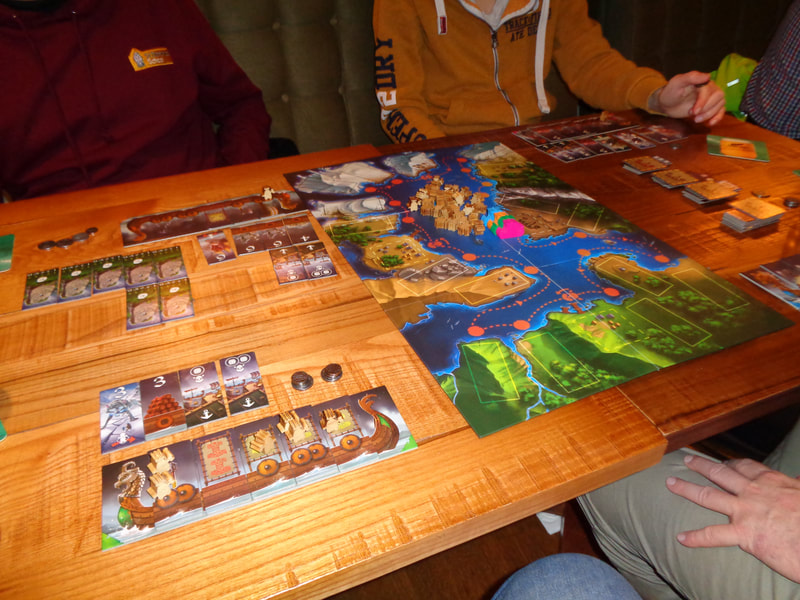
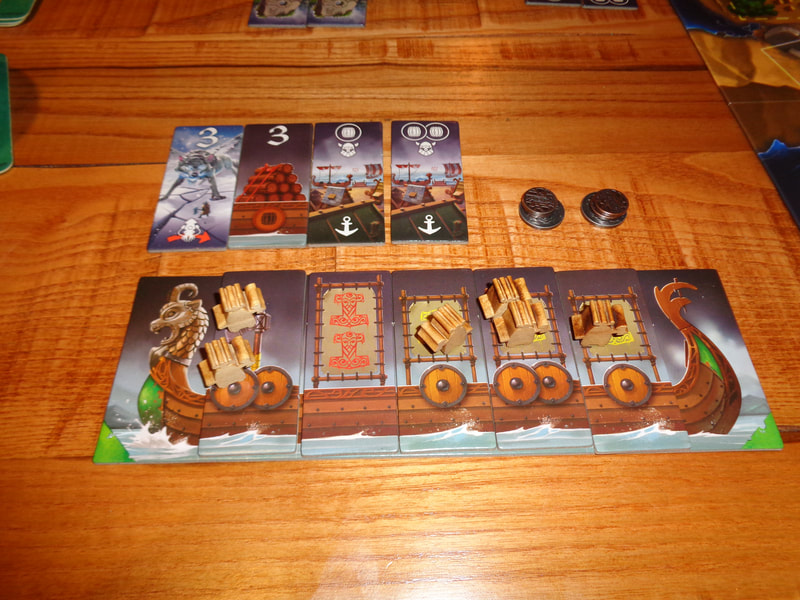
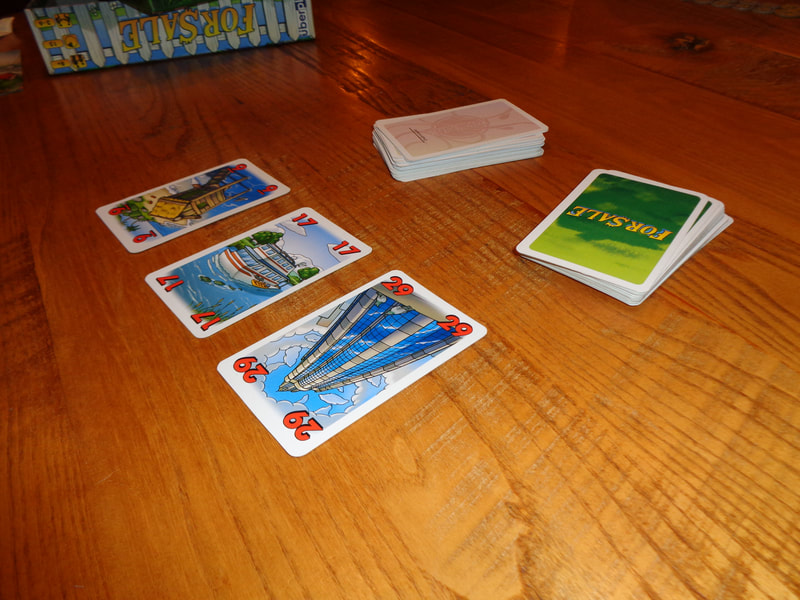
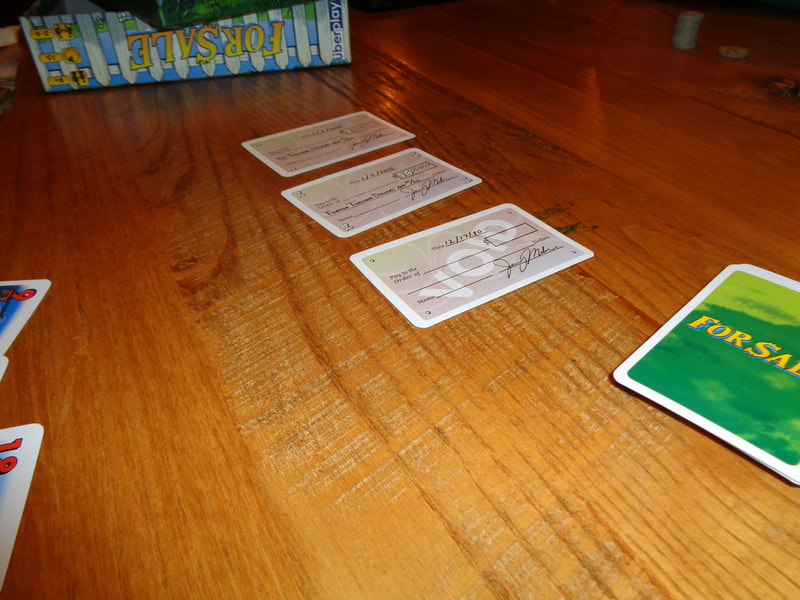
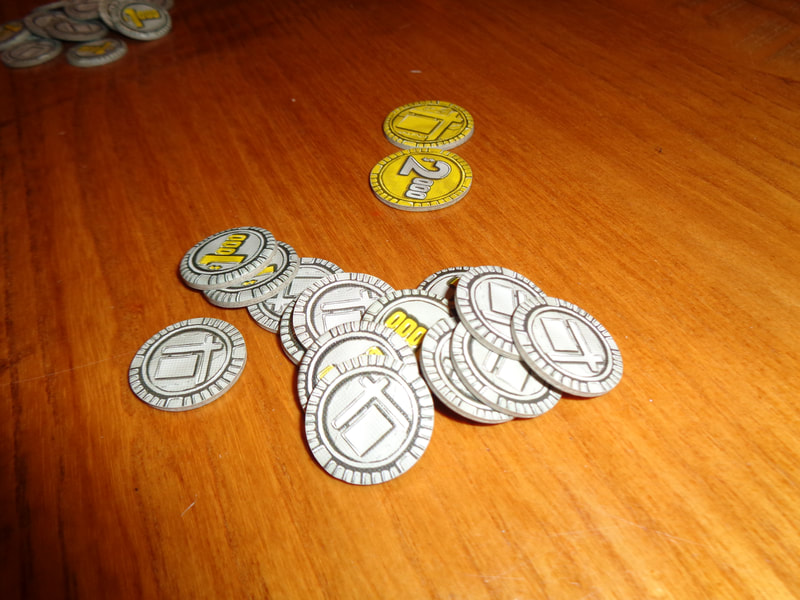
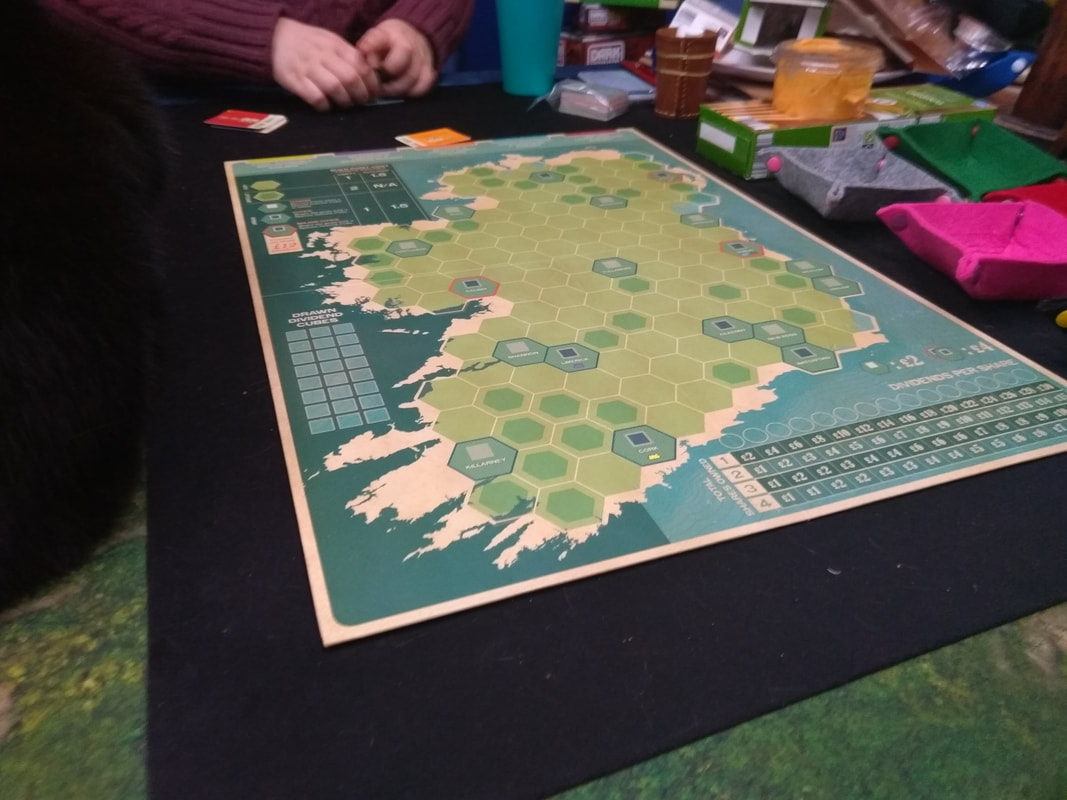
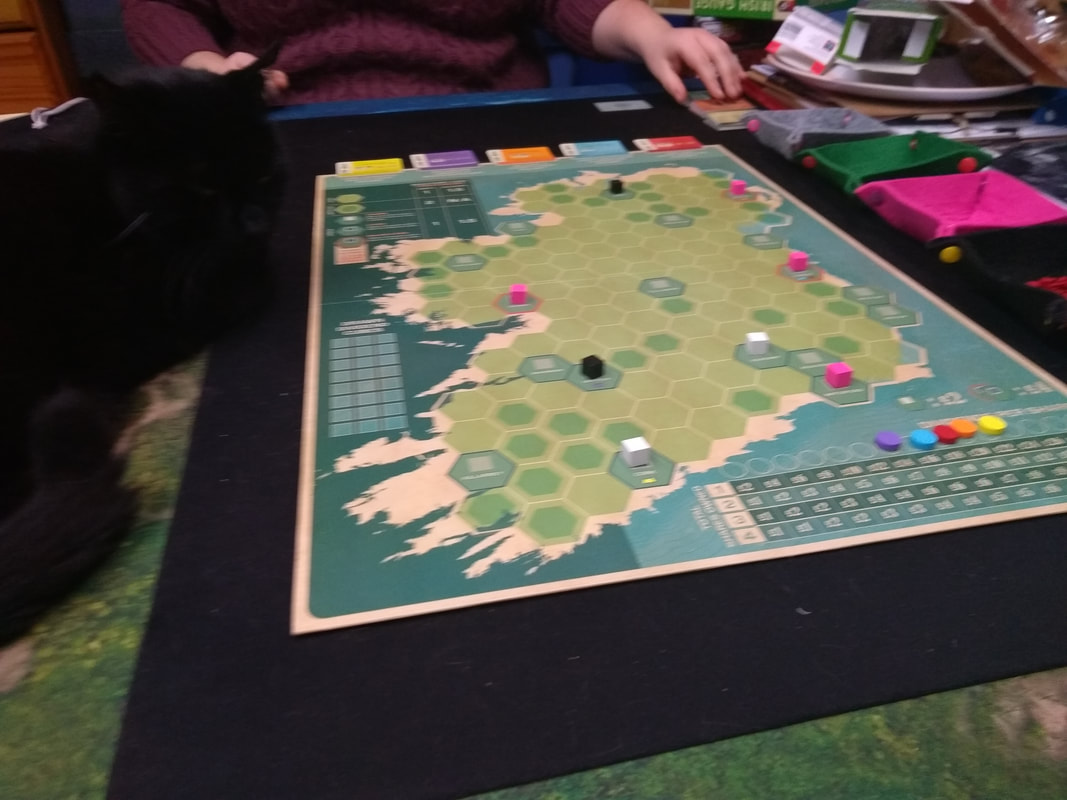
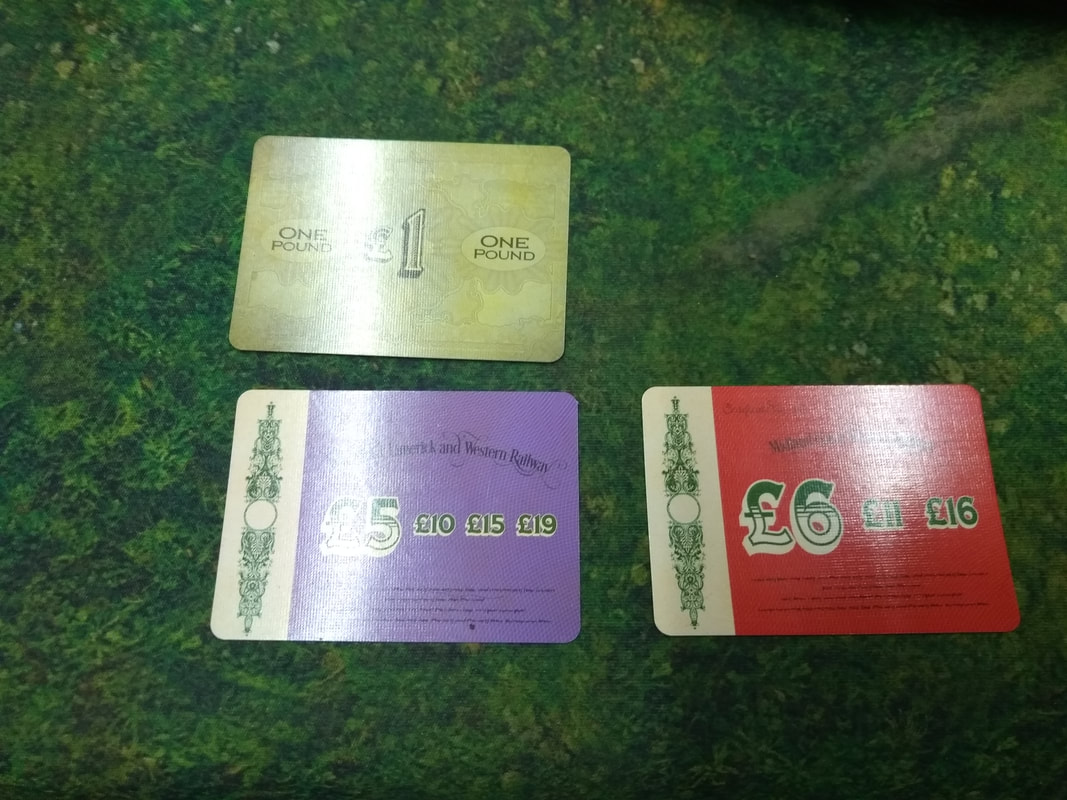
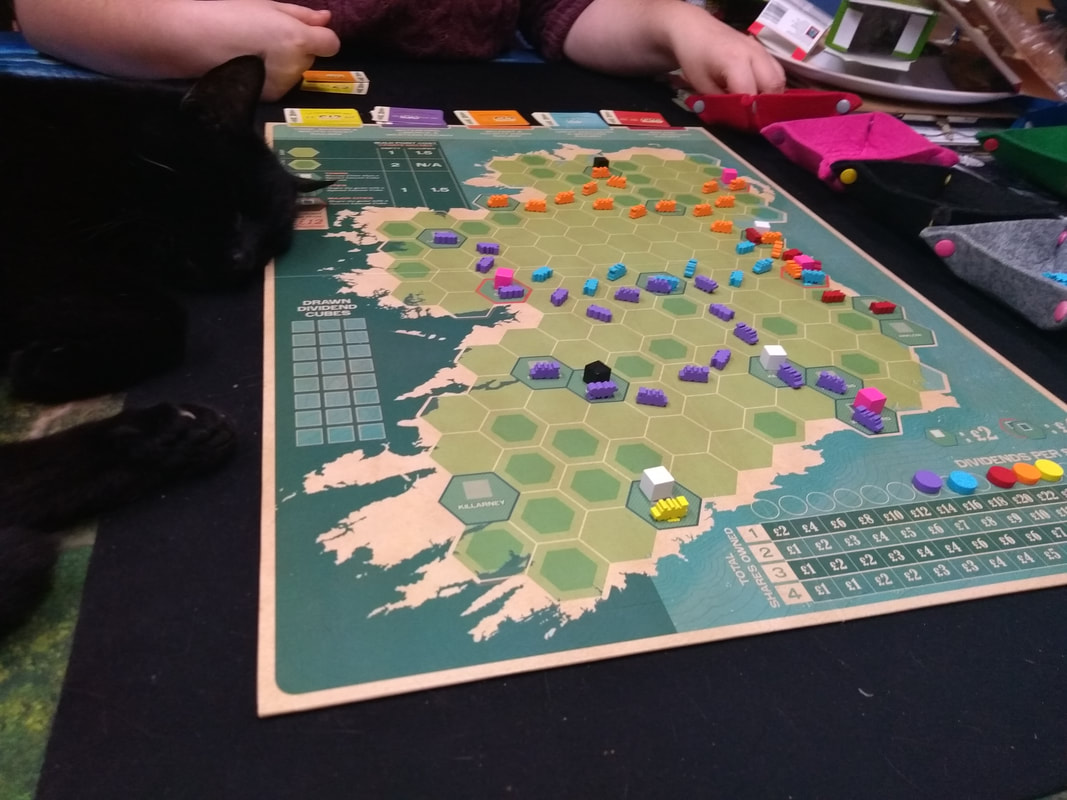
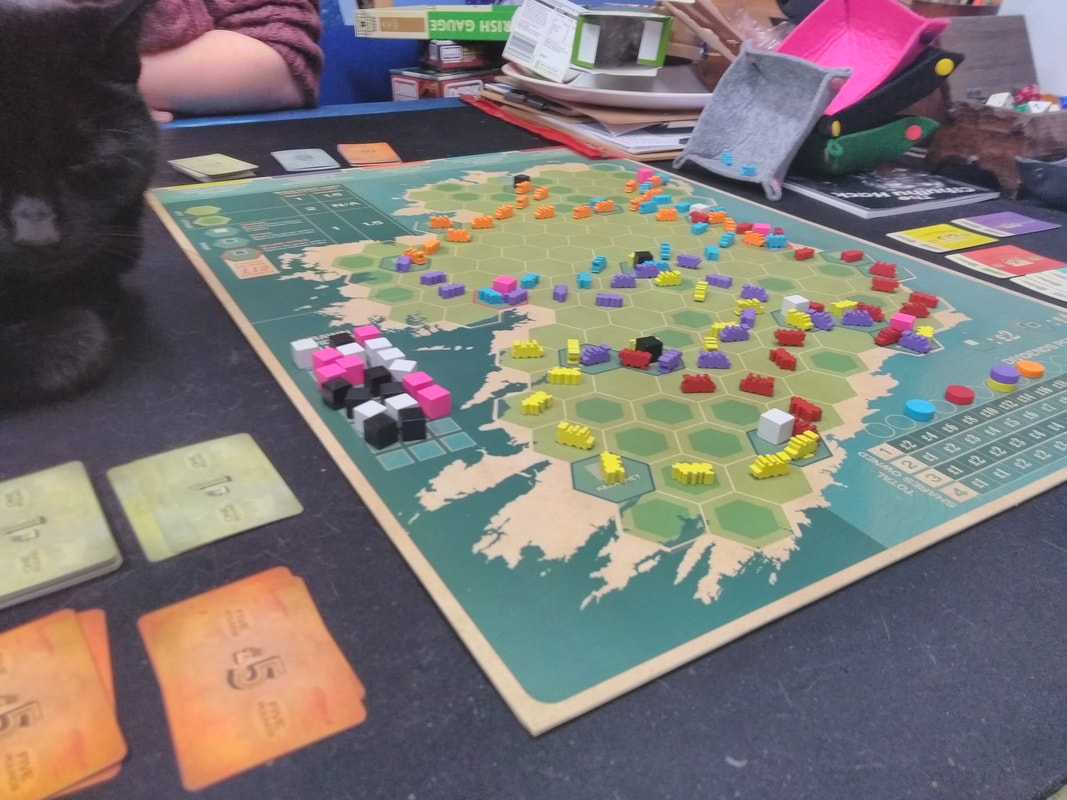
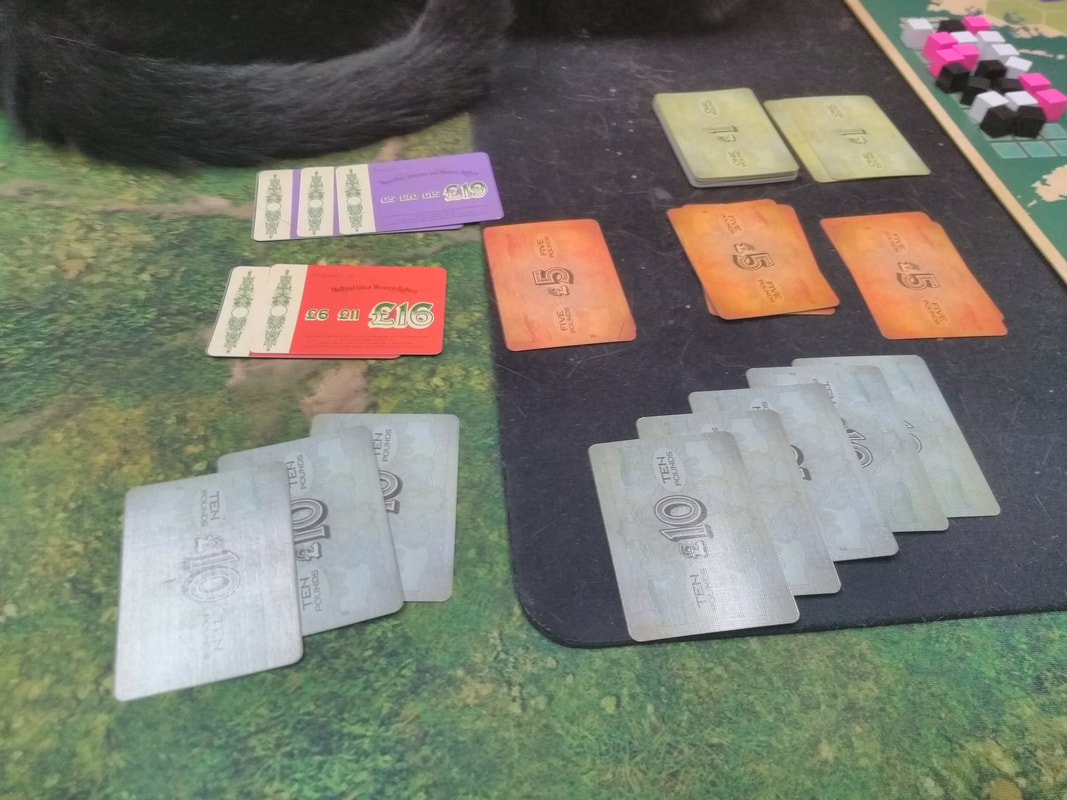
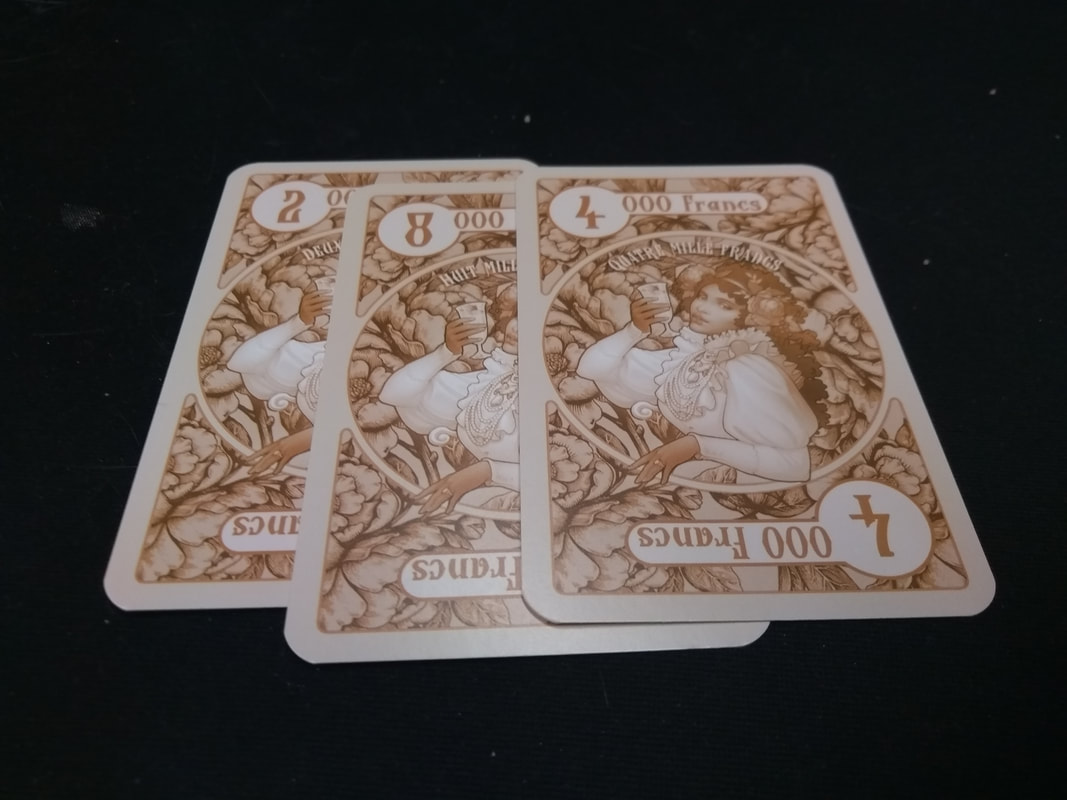
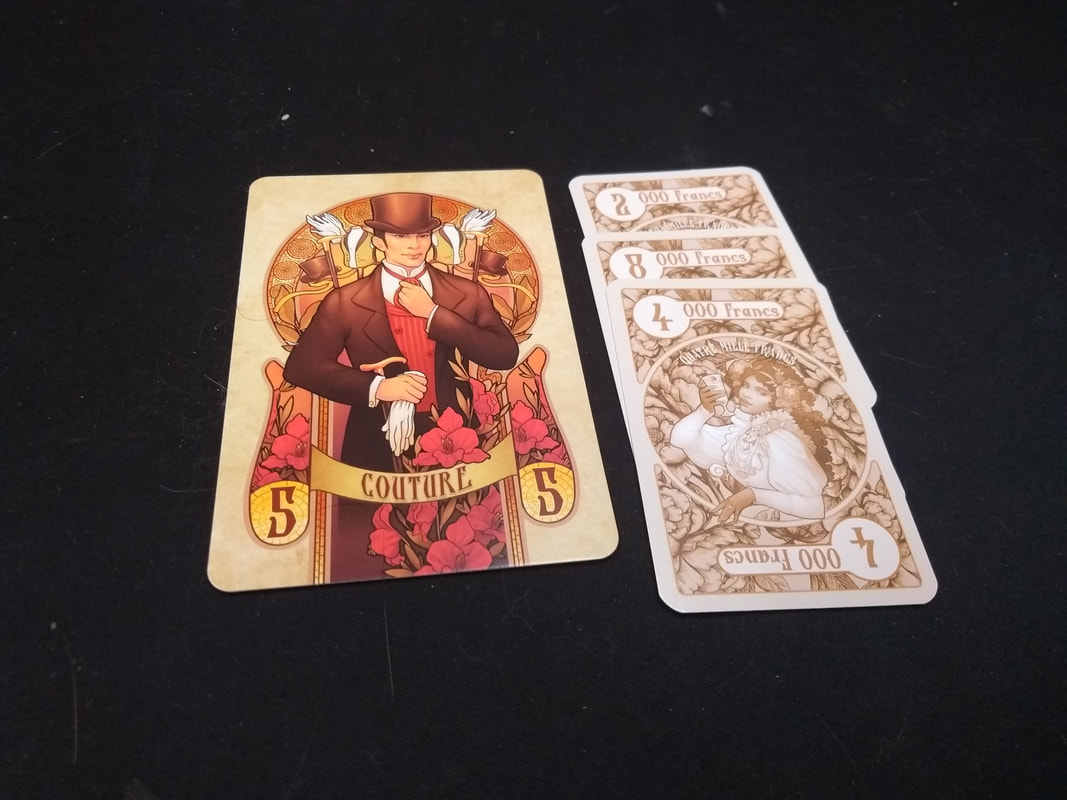
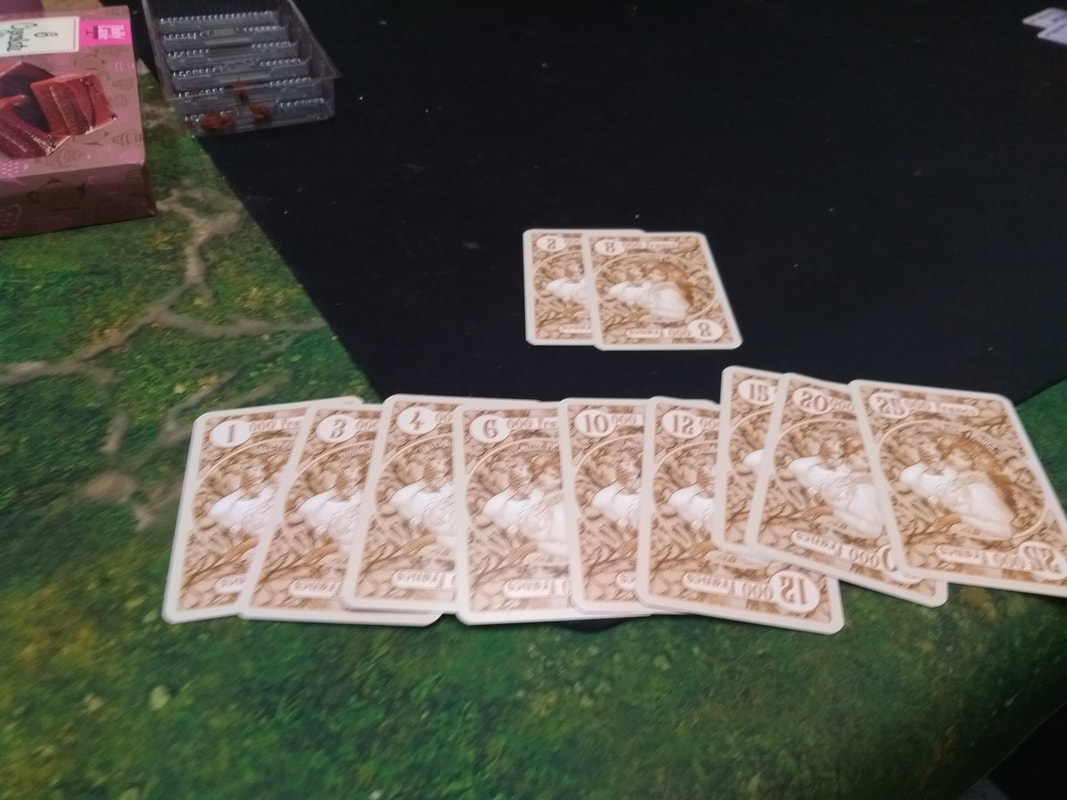
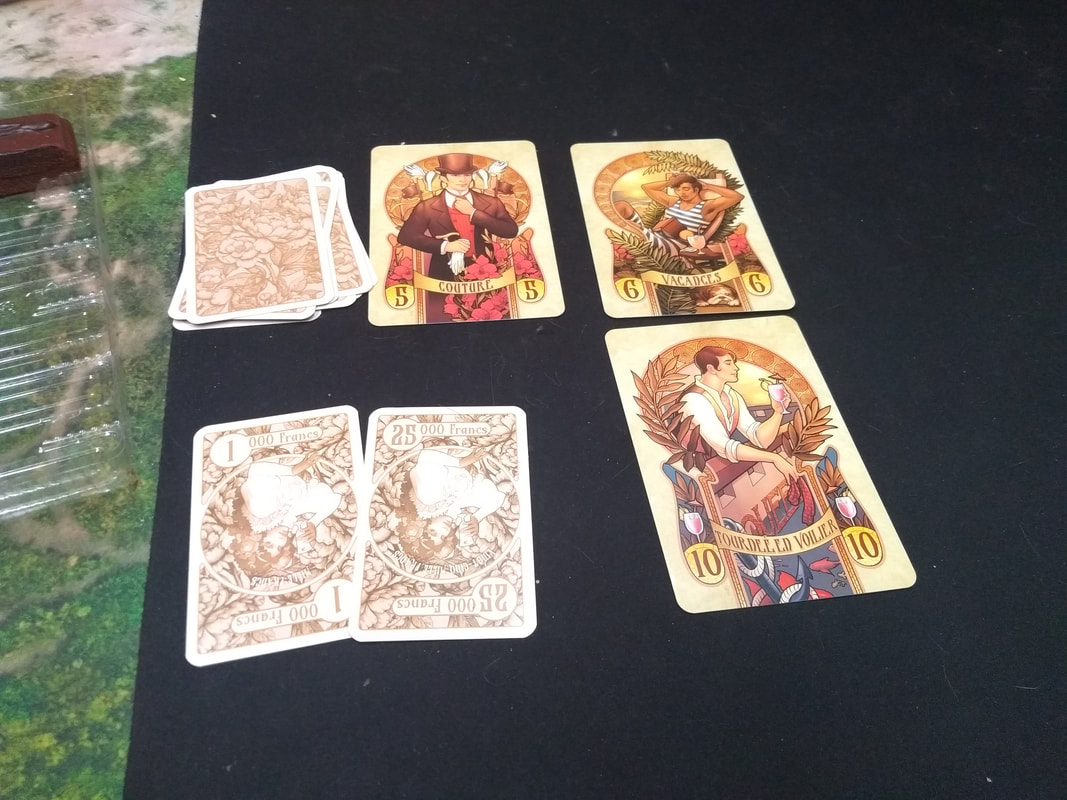
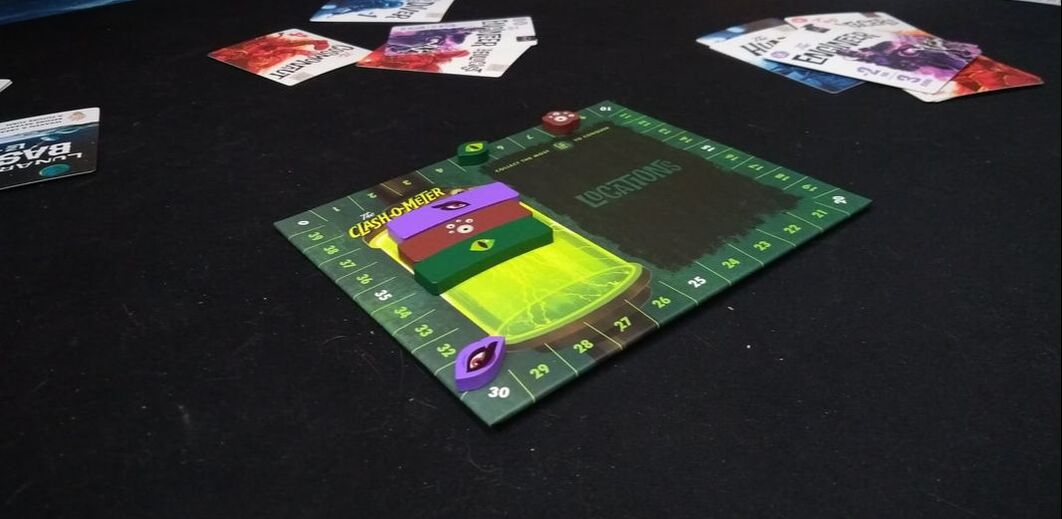






 RSS Feed
RSS Feed
